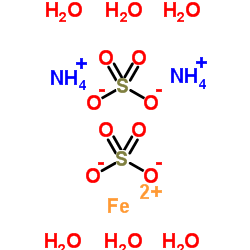Dosimetric evaluation of sucrose and granulated cane sugar in the therapeutic dose range.
Melanie T M Davidson, Kevin J Jordan
Index: Med. Phys. 36(4) , 1340-50, (2009)
Full Text: HTML
Abstract
Granulated cane sugar has been used as a dosimetric material to report dose in high dose accidental irradiations. The purpose of this study was to assess whether clinical dosimetry is also plausible with such a commonly available material. The behavior of cane sugar was explored with respect to therapeutically relevant radiation quantities (dose, dose rate) and qualities (energy, radiation type) as well as under different temperature conditions. The stability of the signal postirradiation was also measured. Absorbed dose was measured by spectrophotometric readout of a ferrous ammonium sulfate xylenol orange (FX)-sugar solution in 10 cm path length cells. A visible color change was produced as a function of dose when the irradiated sugar samples were dissolved in FX solution (10% dilution by mass). A comparison of the optical absorbance spectra and dose response of cane sugar with analytical grade sucrose was done to establish a benchmark standard from which subsequent dosimetry measurements can be validated. The response of the sugar dosimeter read at 590 nm was found to be linear over the dose range of 100-2000 cGy, independent of energy (6-18 MV) and of the average dose rate (100-500 cGy/min). The readout of sugar samples irradiated with mixed photon and electron fields was also shown to be independent of radiation type (photons and electrons). Sugar temperature (20-40 degrees C) during irradiation did not affect dose estimates, making it a promising dosimeter for in vivo dosimetry, particularly in cases where the dosimeter must remain in contact with the patient for an extended period of time. Sugar can be used as an integrating dosimeter, since it exhibits no fractionation effects. Granulated cane sugar is cost effective, safe, soft tissue equivalent, and can be used under various experimental conditions, making it a suitable dosimeter for some radiotherapy applications.
Related Compounds
| Structure | Name/CAS No. | Molecular Formula | Articles |
|---|---|---|---|
 |
Ferrous ammonium sulfate hexahydrate
CAS:7783-85-9 |
H20FeN2O14S2 |
|
Pulmonary effects of ultrafine and fine ammonium salts aeros...
2002-12-01 [Inhal. Toxicol. 14(12) , 1215-29, (2002)] |
|
Pulsed EPR study of amino acid and tetrahydropterin binding ...
2013-11-26 [Biochemistry 52(47) , 8430-41, (2013)] |
|
A novel automated method to measure total antioxidant respon...
2004-02-01 [Clin. Biochem. 37(2) , 112-9, (2004)] |
|
Contribution of hypoxia-inducible factor-1α to transcription...
2011-04-01 [Anim. Sci. J. 82(2) , 244-50, (2011)] |
|
Protective effect of propofol against kainic acid-induced li...
2005-07-01 [J. Neurosurg. Anesthesiol. 17(3) , 144-8, (2005)] |